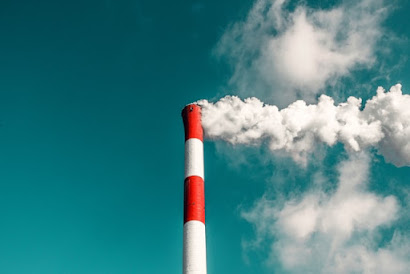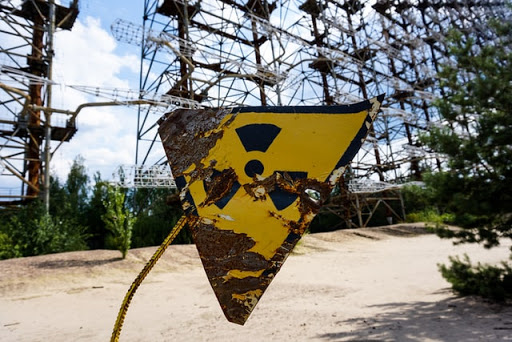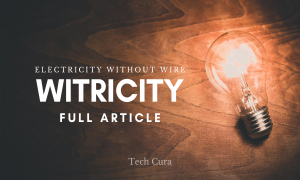On 20 December 1951, Sir Enrico Fermi led a scientist team to give the world first self-sustaining Nuclear chain reaction. Obminsk APS-1 was the first company to launch the world's first Nuclear Power Plant. Now the world has 440 numbers of Nuclear active reactors with 390GW of net total power. 55 nuclear reactors are under construction.
Nuclear power in United state has 96 commercial reactors, 64 pressurized water reactors and 32 boiling water reactors with 809409 thousands of MW Generated electricity.
India has 22 active reactors with 6255 MW of power. Lebarus is Preparing to launch its first Nuclear PP. Here is the full Nuclear Power Plant Explanation.
Nuclear and thermal power stations are very similar to produce electricity. They use the heat energy to convert the water to stream to rotate the steam turbine. The steam turbine is connected to the alternator or generator. But the heat generation section is different for both. Thermal power plants produce heat by burning coal and Nuclear PP use reactor fuel to develop heat.
Why Nuclear Energy?
It all started from Einstein's Formula E=mc², this formula implies that when a mass gets the speed of light it behaves like a tremendous amount of energy. In Nuclear Reaction, a neutron attacks a radioactive atom and it releases a few numbers of neutrons, few byproducts and a huge amount of energy. This energy helps to develop electricity in Nuclear Power Plants.
This huge amount of energy is very much greater than the energy produced in coal-based thermal power plants by burning coal. 1 KG of uranium-235 is equivalent to 300 tons of coal in teams of energy produce. Also Nuclear energy usage in Power Stations reduces the greenhouse gas emissions in Environment. At the point of Advantages you can see pros of Nuclear Power Plants over any other generations. Also I will break some myths about the Chernobyl accident that happened in 1861.
Components of Nuclear Power Plant
The components are:
- Fissile Material
- Control Mechanism
- Steam Cycle
- Waste Management
Fissile Material:
Uranium is the fairly common fuel in this power plant. Uranium is a silvery-grey and very weakly radioactive metal. The atomic number is 92.
But we can see Thorium based Nuclear Power Plant in Future.
Control Mechanism:
The control mechanism consists of a Reactor and heat exchanger. Reactor consists of controlling fuel rods by which we can control the reaction in the reactor (uranium fuel) and moderators. Moderators can be graphite or water.
Chain reactions of the reactor continuously happen in the reactor and the neutron released by the Uranium has high speed. Moderator slow down the neutrons. All this reactor and moderator present in a Nuclear Reactor Core. Due to nuclear fission heat produced in the core and the generated heat transfer to the heat exchanger.
In the Chernobyl Event the reactor core was totally destroyed. For this, the reactors and graphite were exposed in Nature.
Steam Cycle:
The steam cycle starts from the heat exchanger. Generated heat from the reactor comes to the heat exchanger. In the heat exchanger water present in liquid from at a very high temperature about 300°C. The water is in liquid form because they create a very high pressure in the heat exchanger.
Now the heat transforms the water into steam and the steam goes through the valve to steam Turbine. Turbines rotate the magnetic core of Alternator and the alternator generates electricity.
Waste Management:
This is the very dangerous process of a Nuclear Plants. The waste of these plants can easily kill hundreds of lives by getting close to them. There are 2 types of waste from a nuclear plant - High-level radioactive waste, Low-level radioactive waste
High-level radioactive waste produced from power production. This type of waste should be managed with perfect precautions and isolated from the environment. So they bury these waste under the soil. Any type of wrong decision should not be acceptable.
Low-level radioactive waste is in the form of contaminated items like clothing, hand tools, water purifier resins, and the materials of which the reactor itself is built. This waste should be preserved on-site until it loses its radioactive levels. Then it will be managed as ordinary waste.
Also two types of towers is present in the plant - Cooling tower (Yellowish) and Smoke tower (Red-white or black)
Working of a Nuclear Power Plant
A potential atomic fission chain response. 1. A uranium-235 molecule retains a neutron, and partitions into two (splitting sections), delivering three new neutrons and a lot of restricting vitality.
2. One of those neutrons is consumed by a molecule of uranium-238, and doesn't proceed with the response. Another neutron leaves the framework without being consumed. In any case, one neutron slams into a molecule of uranium-235, which then splits and delivers two neutrons and all the more restricting vitality.
3. Both of those neutrons crash into uranium-235 iotas, every one of which splits and delivers a couple of neutrons.
Atomic chain reactions are arrangements of atomic partings (parting of nuclear cores), each started by a neutron created in a former splitting. For instance, 21/2 neutrons on the normal are delivered by the parting of every uranium-235 core that retains a low-vitality neutron.
Advantages
1. Independent of the environment:
This type of power station does not depend on the environment. It can be located in the desert or in mountain areas. Also, it does not depend on weather conditions.
2. No greenhouse gas emissions:
It does not emit any greenhouse gas to the environment as a thermal power plant. That's how it reduces some million tones of the greenhouse gas in the environment.
3. Baseload power supply:
A nuclear power plant can supply continuous power to the load. After fueling a nuclear PP it can generate electricity for 10 to 20 years continuously. When other types of power plant schedule supply load. So, the load can get continuous power generation.
4. More energy:
Some amount of nuclear reactor can generate a huge amount of heat energy which can not be possible by the same amount of coal in a coal-based power plant.
Disadvantages
1. Radioactive waste:
The high and low-level radioactive wastes from the production section are very dangerous for lives.
2. No mistakes:
There is no tolerance for human stupidity or mistakes in a nuclear power plant otherwise no one can survive in the station.
Some mistakes destroy the total region of a Nuclear power station in Fukushima, Japan on 11 March 2011. But that was too mild as compared to Chernobyl.
3. Old model:
Today's all nuclear power plants follow the same process as earlier. They also use the same model which is used at first.
Do you know what happened in Chernobyl Nuclear Power Plant?
Due to some human stupidities and mistakes, the pump for the heat exchanger was turned off. For this, the water in the heat exchanger couldn't circulate and release heat. The temperature of water went to about 3000°C and steam production went high.
And at that time the element used in the control rode in the reactor behaves like a catalyst. This catalyst breaks the water. This meaning is the water was broken into H+ and OH- ions.
At the high temperature, these two did that disaster. There was no nuclear explosion, this is a myth. Simply the water in the heat exchanger blast and also for this the reactor chamber melts. For this reason, the reactor and the graphite were exposed to the environment.
You can see the factory is still there if a nuclear explosion happened, the plant didn't stay.
Post by Riju Sharma










7 Comments
Very helpful
ReplyDeleteThank you Shinjini :)
DeleteNice
ReplyDeleteWaiting for another topic🔥
ReplyDeletewww.emilykid.com
ReplyDeletewww.mariay7.com
ReplyDeleteI read your article. Your article is very informative.
ReplyDeletePlease read my article
computer information technology
Thank you for your feedback